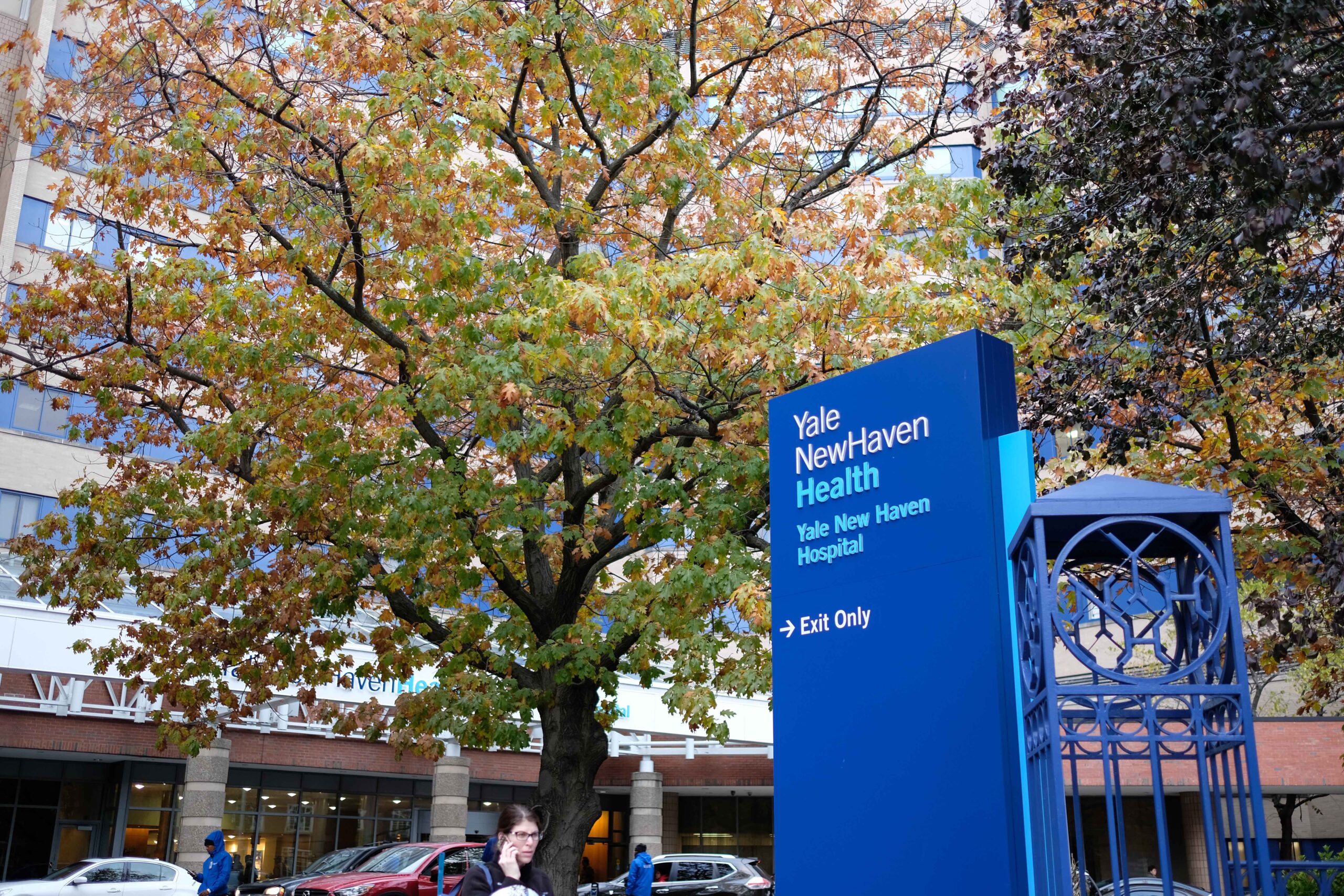Yale New Haven Health unveils updates to Access 365, operating model and growth plans
The health system announced updates to patient access initiatives, an operational restructuring and geographic expansion plans.

Eric Wang
Yale New Haven Health System leaders are advancing a new vision to improve patient care access, operational efficiency and systemwide growth.
At a March virtual town hall, Yale New Haven Health System — YNHHS — administrators presented three key initiatives: the Access 365 program to streamline patient access, a redesigned operating model aimed at improving organizational alignment and a plan to expand clinical services into new geographic regions.
Addressing faculty and staff, administrators cited external pressures and systemwide goals as reasons for the updates.
“We want to move from being good to being excellent,” YNHHS CEO Christopher O’Connor said at the event. “And part of that is going to be reacting and being ready to support changes that may be necessary.”
Access 365 progress
Peggy McGovern, CEO of Yale Medicine and chief physician executive for YNHHS, led the presentation on the system’s Access 365 initiative, aimed at streamlining scheduling, triage and financial transparency for patients. The initiative is structured around five pillars: capacity management, scheduling systems, referral processes, clinical coordination and financial health.
The Access 365 initiative is being implemented in phases across different specialties or departments. By gradually introducing reforms, Yale New Haven Health aims to test, refine and scale the system without overwhelming staff or disrupting patient care.
The Access 365 initiative has optimized scheduling to increase appointment availability, showing early signs of progress in reducing appointment lag, according to McGovern. For specialties included in the program’s first two phases, the median wait time for a new patient fell from 23 days to 16.
However, the wait time remains above the industry benchmark of 14 days. In primary care, wait times have only improved slightly, from 30 to 29 days.
McGovern emphasized that while scheduling is often viewed as the primary access issue, underlying gaps in clinician availability are also central. For some services, particularly in primary care, staff shortages remain a limiting factor.
To improve communication and patient flow, YNHHS is transitioning from its previous Cisco-based call platform to a new system called Genesis, which offers artificial intelligence routing and built-in analytics.
McGovern noted that a February cyberattack, which rendered Cisco inoperable, accelerated the rollout of Genesis. The transition allowed 88 percent of call center volume to return to full functionality within weeks.
The initiative also introduced self-scheduling tools, but adoption remains low, with only 1.4 percent of patients using the feature. Patient experience scores related to scheduling have improved modestly.
McGovern stressed that continued investments in scheduling technology, care triage staffing and template standardization are underway, with additional clinical areas slated for implementation through eight phases stretching into the coming year.
Operating model shifts
Pamela Sutton-Wallace, the chief operating officer of Yale New Haven Health, introduced the health system’s new operating model — a structural redesign that aims to better align inpatient, ambulatory and at-home care under centralized leadership, she said.
The model divides care delivery into three main categories: inpatient operations, which refers to hospital-based care; ambulatory practices, which covers outpatient clinic visits; and health at home, which focuses on care delivered at home or through remote monitoring.
Each of these care settings is supported by shared resources, including physician leadership, core medical services such as imaging and laboratory testing and centralized administrative teams for functions like human resources, digital technology and finance.
“What we know is that more and more care is being moved into the ambulatory setting,” Sutton-Wallace said. “And it’s better for our patients.”
The reorganization reflects a shift toward care delivery outside of traditional hospital settings.
Ambulatory practices — including Yale Medicine, Northeast Medical Group and hospital-based outpatient clinics — will now report through a unified leadership team led by Jorge Rodriguez, chief ambulatory officer, and Dr. Patrick Kenney, chief ambulatory physician executive. The goal, Sutton-Wallace stated, is to bring consistency in clinical standards, safety protocols and patient experience across all outpatient settings.
Inpatient operations, previously embedded in service line structures, will now report to Courtney Bose, YNHHS chief nursing officer.
Health at Home encompasses home health visits, remote monitoring and companion care, positioning YNHHS to respond to patient preferences for care closer to or within the home.
Platform services, including pathology, anesthesia and perioperative care, will serve all three verticals. Corporate services such as IT and HR will be further centralized, part of a broader effort to reduce redundancy and achieve economies of scale. Sutton-Wallace described the new model as consistent with national best practices at other large academic health systems.
The reorganization also includes changes to the roles of advanced practice providers, or APPs. Under the new structure, outpatient APPs will be more directly embedded into scheduling systems and clinical workflows, allowing them to practice at the top of their licenses and improve appointment availability.
“We are doing this work to get everyone working top of license,” McGovern said.
Leadership acknowledged that the redesign will affect some staff roles but emphasized that most changes were managed through attrition and vacant positions. New roles have been created to support the redesigned model, they said.
Growth plans
In the final section of the town hall, CEO Christopher O’Connor and Yale School of Medicine Dean Nancy Brown outlined the system’s growth plans, focusing on geographic expansion and infrastructure development.
The goal, according to O’Connor, is to bring high-quality services closer to patients’ homes and expand Yale New Haven Health’s footprint in areas where demand is strong and access is limited.
In Central Connecticut, the system plans to renovate a building it already owns to serve as a major outpatient hub. In Mid-Fairfield County, real estate searches are underway to establish a clinical presence between Bridgeport and Greenwich. In Westchester County, YNHHS is initiating services at two locations, with a particular focus on obstetrics, in response to rising demand and disruptions in local care availability.
“Over 50 percent of the inpatient admissions into Greenwich come from Westchester,” O’Connor said. “Establishing services there is critical to our future.”
Brown described the expansion as vital to executing the joint clinical strategic plan developed by the medical school and the health system.
Both Brown and O’Connor also addressed looming policy and financial uncertainties, including potential cuts to Medicaid and Medicare funding, as well as changes to site-neutral payment policies. Connecticut currently faces a $1.4 billion annual Medicaid funding gap, with YNHHS shouldering more than $450 million of that shortfall. Federal budget proposals signal further reductions.
“We didn’t build this reimbursement system,” O’Connor said. “We just try to manage within it.”
Despite these challenges, leaders reaffirmed their commitment to growth and emphasized that efficiency, coordination and patient-centered design will be at the core of future planning.
The Yale School of Medicine was founded in 1810.







